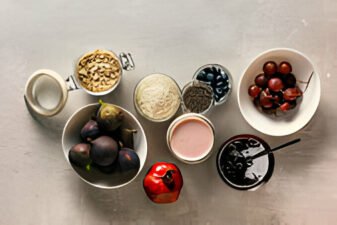Early Carb Foods Were Almost 100 Percent Wholegrain
As explained, early plant foods eaten by our hunter-gatherer ancestors were almost exclusively whole grain, so their effect on human blood glucose was gradual and relatively small. This type of carbohydrate was both high in energy and nutritious because it provided slow-release fuel that helped to delay hunger pangs while providing essential energy for working muscles long after meals were eaten. This low glycemic effect was also easy on the insulin-producing cells in the pancreas.
See also: Effect of Carbs on Blood Glucose and Effect of Carbs on Insulin Production
Food Processing of Carbs
However, with time, flours became more processed. They were ground more finely, bran was separated from the resulting white flour. Ultimately, with the introduction of high-speed roller mills in the 19th century, food manufacturers demonstrated it was possible to produce white flour so fine that it resembled talcum powder in texture and appearance. These ultra-fine white flours were produced in order to make soft bread, cakes and pastries.
Modern Day Food Refining of Carbs
Today, the average food store stocks a huge variety of carb-rich foods (eg. bagels, donuts, muffins, croissants, popcorn, pastries, cakes and cookies) which bear no resemblance to earlier carbohydrates. The flour is typically stripped of bran and most natural micronutrients; it is baked at very high temperatures; it may include a range of additives, such as colorings, artificial flavors, flavor-enhancers, preservatives, to name but a few. And to enhance taste, it is often combined with large amounts of sugar and/or fat. While many of our new foods are still based on the same staple cereals – wheat, corn, oats – the original grain has been refined almost to invisibility. All because modern day food shops and consumers demand the most palatable and shelf-stable end products.











